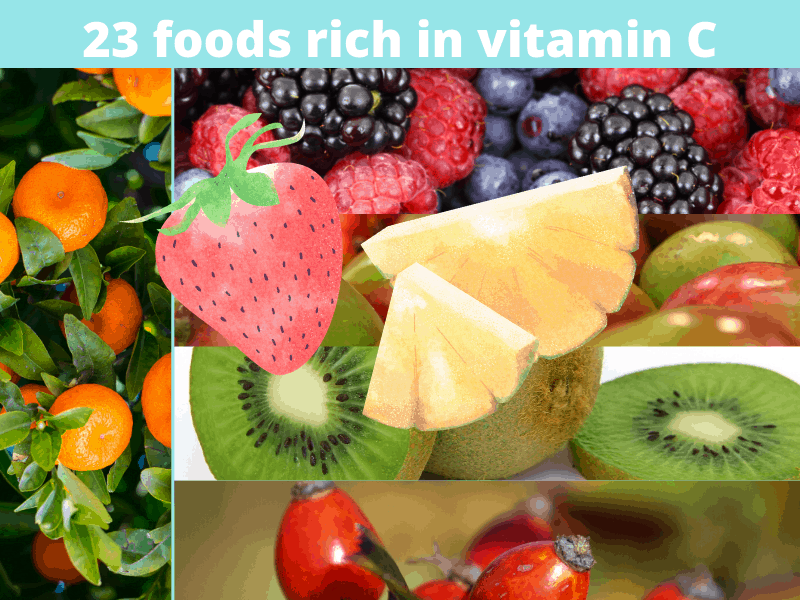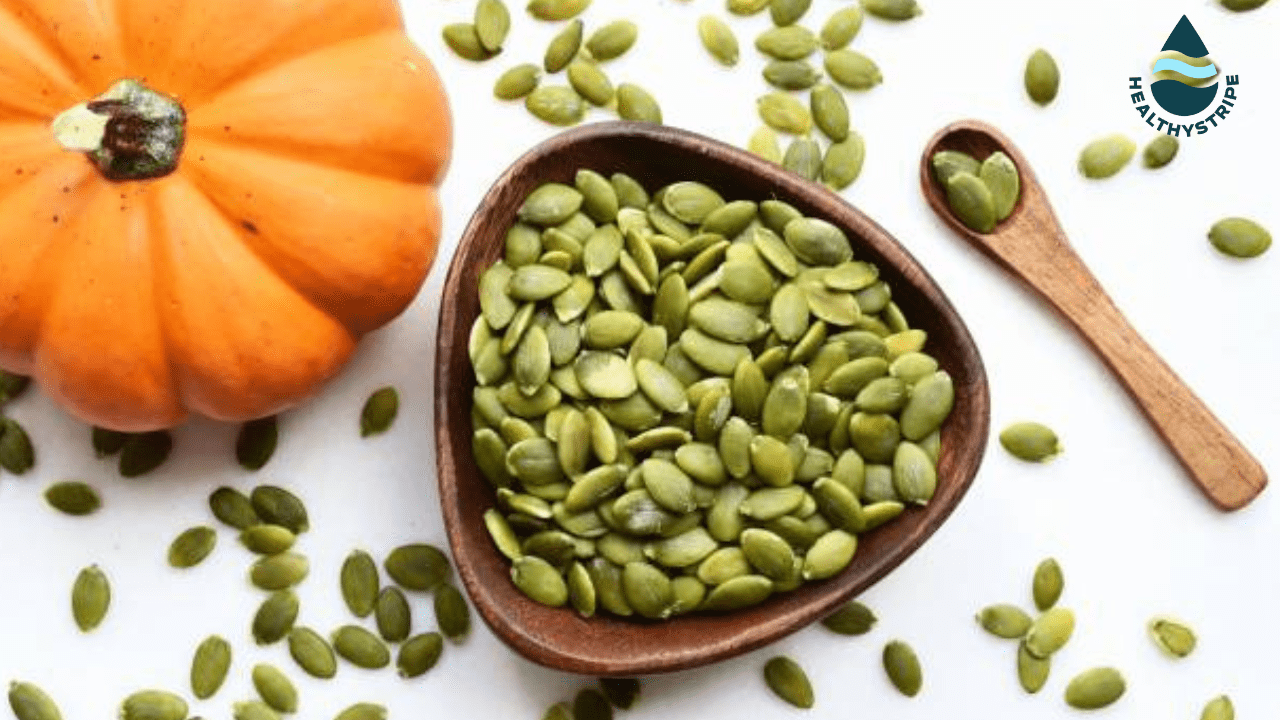23 Foods Rich In Vitamin C | How to Maximize Their Absorption?

With the hundreds of thousands of COVID-19 cases worldwide (and the numbers going up each day), experts recommend strengthening your immune system as an important way of fighting this disease.
Getting enough sleep and reducing your stress levels is key, but so is watching what you eat.
Food is medicine, they say, and among the foods that should load up your body in order to boost immune function are the foods rich in vitamin C.
Vitamin C – The Key Facts
Vitamin C, more commonly known as ascorbic acid, is a water-soluble vitamin that serves numerous functions – ones that go beyond getting rid of colds. It does so through its antioxidant properties and ability to induce collagen formation.
The antioxidant effects help fight free radicals and prevent oxidative damage to the cells. This, in turn, may help reduce the risk for certain diseases such as cardiovascular disease and cancer.
Meanwhile, by inducing collagen production, vitamin C promotes wound healing, strengthens blood vessels, and maintains the integrity of other tissues.
Such effects are most helpful in maintaining the health of the skin and prevention common skin problems like acne pimples.
The recommended daily amount (RDA) of vitamin C intake to reap the aforementioned benefits is 90mg for men and 75mg for women.
Unfortunately, the body cannot synthesize its own supply of vitamin C so we have to get it regularly from an outside source. You can opt to take vitamin C supplements or you can get them from natural food sources.
Well, there are many excellent foods rich in vitamin C and we’ve listed some of the best among them.
Hint: It’s not just your oranges or lemons!
Foods Rich In Vitamin C
1. Broccoli
This yummy veggie packs up to 132mg of vitamin C in every serving.
Its vitamin K profile is also impressive, with each serving giving you more than twice the RDA. Not only that, but it is also rich in fiber, as well as some phytonutrients such as glucobrassicin, gluconasturtiin, and glucoraphanin.
Together, these trios of phytonutrients are said to play a role in preventing cardiovascular diseases, fighting certain types of cancers, and reducing inflammation.
The anti-inflammatory effects of broccoli were demonstrated by this study which included a group of 27 young men.
These men are heavy smokers, and they were asked to eat steamed broccoli for 10 days. After 10 days, the levels of inflammatory markers in their blood were reduced by almost half.
The same trio of phytonutrients is also helpful if you’re on a detox, so you may want to add this veggie to your list of detox foods.
Enjoy broccoli by eating it raw or cooked. Get the best one by choosing those with brightly colored stalks and dark green heads that feel firm when squeezed. Then, if you like your broccoli cooked, steaming is preferred over boiling to maintain the vitamin C levels inside.
2. Chili Peppers
Very few are aware that chili peppers are also a rich source of vitamin C. In fact, its vitamin C levels of 108 to 120mg easily topples that of citrus fruits.
Red chili peppers are found to have more vitamin C than its green counterpart, and the same goes for fresh chilli peppers versus the dried and partially-dried forms.
In addition, chilies also have capsaicin – the substance responsible for the spiciness. Capsaicin has been proven to help relieve joint and muscle pains. It also has been shown to promote weight loss.
3. Bell Peppers
Another out of the lesser-known vitamin C foods, bell peppers actually have higher vitamin C levels than oranges. Red, green, or yellow – the color doesn’t matter.
Nonetheless, it is important to note that as the bell pepper matures or lightens in color, the vitamin C levels increase.
On average, a cup of chopped bell peppers could give you anywhere from 150 to 180mg of vitamin C, or twice the RDA.
Red bell peppers, in particular, are also a rich source of vitamin A, which is important for the health of the heart, eyes, and skin.
The cardioprotective effects of vitamin A include preventing clot formation to reduce the risk of heart attacks and stroke. As for the eyes, it helps prevent cataracts or slow down cataract progression.
Meanwhile, green bell pepper is a good source of fiber. Other important nutrients found in bell peppers include vitamins B complex, E, and K.
Enjoy bell peppers by eating them raw with a dip, or by adding them diced into an omelet or salad.
4. Kale
This nutrition powerhouse is loaded with many important nutrients like vitamins and minerals, as well as some fatty acids. One cup of kale provides anywhere from 80 to 130mg of vitamin C.
It also delivers a sizable amount of vitamins A and K, at twice and seven times the RDA respectively.
Consume kale as a salad or a smoothie, mixing it with other ingredients in our list – like strawberry, perhaps?
5. Citrus Fruits
Citrus fruits have a reputation for being a vitamin C powerhouse. No surprise there considering that they’re always the first in foods that are rich in vitamin C ever used to cure scurvy according to history.
Scurvy, first seen in English sailors, is a disease brought about by vitamin C deficiency. It is characterized by bleeding gums, teeth that start to fall out, frequent bruising, poor wound healing, and changes in the skin and hair. Severe cases lead to internal hemorrhaging which, in turn, leads to death.
A British Royal Navy surgeon was able to cure the disease by stockpiling lemon juice in sailors’ ships. This is how English Sailors came to be known as “Limeys”.
Oranges, lemons, limes, and grapefruits – true enough, all of them pop at least 70mg of vitamin C per serving. Contrary to the popular belief, though, oranges don’t have the highest vitamin C levels among citrus fruits.
If you want citrus fruits to be your main source of vitamin C from the diet, experts suggest going for lemons or grapefruit instead. Added benefits of citrus fruits include reduced levels of bad cholesterol in the blood.
Enjoy citrus fruits as is or if you can’t stand the sour taste, make them into a refreshing beverage. The vitamin C content will remain the same.
6. Cauliflower
It belongs to the same vegetable family as broccoli, so it is not surprising that it is also a good source of vitamin C, with each serving containing 127.7mg. It also serves other important nutrients like vitamin K and folate.
Enjoy it in any way you want – raw, steamed, mashed, or roasted – the vitamin C levels stay the same. If you want, you may add olive oil and fresh thyme.
7. Papaya
Mostly known for its skin whitening and brightening benefits, studies show that this fruit is among the best food sources of vitamin C, with 88.3mg per serving.
Other health benefits of papaya include lower blood cholesterol levels, stronger bones, promote cardiovascular health, and reduced risk of liver and colon cancers.
Some studies also suggested improved brain health and function through its potent anti-inflammatory effects. One study, in particular, showed how papaya helped reduce brain inflammation and oxidative stress in patients with mild Alzheimer’s.
Consume papaya on a regular basis by making it into a smoothie or mixing it with yogurt. You may also eat the fruit by itself, sprinkling it with some kosher salt and/or lime juice.
8. Strawberry
This tasty, succulent delight is chock-full of vitamin C, as well as other important nutrients like vitamins A, B-vitamins, vitamin E, fiber, folate, fluorine, iodine, manganese, and potassium. The vitamin C content is said to be around 84.7mg per serving.
The high nutritive value of strawberries leads to a wide variety of health benefits like reduced inflammation and oxidative stress, lower risk for heart diseases and cancers, and prevention of obesity-related health problems.
As for the cardiovascular benefits, one study found that both fresh and freeze-dried strawberries could help reduce bad cholesterol levels and prevent inflammation of the blood vessels.
These resulted in an overall reduction of risk factors associated with heart disease.
Strawberries are delicious so won’t have a problem enjoying them. Consume them raw, or add them to your salad for a nice sweet and salty twist.
9. Blackcurrant
You can tell from the color of this darkly-colored berry that it’s nutrient-dense. Indeed it is.
Not only is it one of the richest sources of vitamin C in fruits at around 180mg per serving, but it also holds plenty of other valuable nutrients such as vitamin B5, iron, potassium, and another potent antioxidant called anthocyanin.
The combined antioxidant effects of anthocyanin and vitamin C render blackcurrants very good in slowing down ageing, preventing age-related diseases, and reducing chronic inflammation.
If you haven’t tried blackcurrants yet, maybe now is the perfect time to do so!
10. Kiwi Fruit
Popular in New Zealand, a serving of this tiny fruit boasts not only potassium and copper but also vitamin C. In fact, it has exceptionally high amounts of vitamin C at 137.2mg per serving.
This makes the kiwi fruit especially helpful in combating cold and other infections of the upper respiratory tract, and there are studies to prove it.
In one study, it was reported that kids who consume kiwi fruit on a regular basis are more resistant to colds and other respiratory infections than kids who don’t.
In another study involving participants with vitamin C deficiency, consuming two kiwis a day normalized blood levels of vitamin C by increasing it by up to 300%. The white blood cell activity was also boosted by 20%.
As if those weren’t enough, there is also a study on the fruit’s cardiovascular benefits. This 2004 study reported how the kiwi fruit helped reduce the risk of heart disease and stroke by lowering bad cholesterol levels in the blood and preventing platelet aggregation in its 30 healthy participants.
Enjoy kiwis by eating the fruit raw – peeled or skin on. If you choose to eat the skin on, make sure to rub the fuzz off first then wash the fruit thoroughly. You may also add them to salads or make them into a smoothie along with other fruits or leafy greens.
11. Mango
Not a fan of oranges or lemons? Go for a mango. This tropical fruit is a great source of vitamins C and A. The amount of vitamin C in each serving is around 122.3mg.
12. Guava
The guava plant is popular for its antimicrobial properties which can be obtained by boiling its leaves. The fruit itself, on the other hand, is equally useful given its superfood status and the crazy amount of vitamin C in each serving – 326mg!
As if that weren’t enough, guavas are also a rich source of vitamin A, fiber, folic acid, lycopene, manganese, and potassium.
In one study, it has been found that regular consumption of guava fruit produced a significant reduction of blood cholesterol levels and blood pressure readings in the study participants.
Enjoy guava fruits by eating them raw, or by making them into a jam or jelly.
13. Acerola Cherry
This fruit is not as popular nor as common as the other fruits on our list, but it sure packs a lot of punch when it comes to vitamin C content.
One small red fruit has no less than 60 times the amount of vitamin C you’d find in an orange. A half-cup serving delivers as much as 822mg of vitamin C.
That’s way more than the required daily amount, or 913% RDA to be exact.
Among the prized benefits of consuming acerola cherries include reducing the risk of cancer, preventing UV-induced skin damage, and repairing DNA damage brought about by an unhealthy lifestyle.
Eating raw fruit is recommended, but you may also consume the powder form and reap the same benefits.
14. Brussel Sprouts
They may not be a favorite of many and it is nearly impossible to convince kids, among others, to eat them but brussels sprouts are actually packed with plenty of nutrients despite their small size.
One cup of these miniature cabbages provides 74.8mg of vitamin C.
They are also a good source of other important nutrients like vitamin A, vitamin K, calcium, folate, fiber, iron, manganese, phosphorus, and potassium.
The high nutrient content makes it effective in providing protection against cardiovascular disorders and cancers, as well as promoting and maintaining bone health.
This review article summarizes how vitamin C can help increase bone density to reduce one’s risk for osteoporosis and hip fracture.
Since the main downside of Brussel sprouts is their bitter taste, you may want to roast them first to make them a little sweeter. Cook it in olive oil, then toss in some onions and bacon to make it even tastier.
15. Pineapple
Swap your orange with this tropical fruit, as it is actually a better source of vitamin C at 78.9mg per serving.
Aside from vitamin C, pineapples also contain bromelain, an enzyme that aids in food digestion and reduces bloating. Enjoy pineapples by eating them raw, juicing them, or making a smoothie.
16. Cantaloupe
The vitamin C levels in cantaloupe, or melons, may not be as high as that of the other foods on our list, but 67mg per serving is still a good deal.
Anyway, vitamin C is not the only good stuff that you’ll get, as this juicy fruit is also rich in other nutrients like vitamin A, B-vitamins, copper, magnesium, potassium, and cucurbitacins (an anti-inflammatory compound).
Cantaloupes are naturally sweet and refreshing, making them a suitable substitute for the unhealthy sources of sugar that you might crave throughout the day.
17. Potato
Aside from being an excellent source of potassium, potatoes are also a decent source of vitamin C. One serving of medium potato has approximately 20mg of this vitamin.
Enjoy potatoes by making them into a healthy breakfast. Baked, fried, mashed, or oven-roasted, there’s a lot you can do with a humble potato.
18. Amalaki Fruit
You probably haven’t heard of this Indian fruit before but you’ll surely want to learn more about it once we tell you that it is one of the most concentrated sources of vitamin C in fruits.
According to studies, the vitamin C levels in each fruit are way more than the amount of vitamin C found in oranges. No wonder it is hailed as one of the most important fruits in Ayurvedic medicine is used mainly for its immune-boosting properties for thousands of years now.
It also offers a lot of other benefits such as improving eyesight and maintaining the health of skin and hair.
To get the most out of this super fruit, press it to get the juice and dilute it with a glass of water. Take on an empty stomach first thing in the morning to aid in digestion and reap the benefits mentioned above.
19. Kakadu Plum
Another native fruit in our list, the Kakadu plum originates from Australia. Like the Amalaki fruit, the vitamin C levels of this olive green fruit are about a hundred times more than that of an orange.
A piece of plum contains a whopping 481g of vitamin C – the highest recorded concentration of vitamin C in any food source. This amount is more than five times the RDA, which also means enormous antioxidant properties.
This wonder fruit also is also loaded with vitamin E, calcium, folic acid, lutein, magnesium, potassium, and zinc. The potassium content is in perfect ratio with the sodium content, making it suitable for individuals with high blood pressure.
Described as having a tart to bitter taste, Kakadu plum can be enjoyed raw or you can turn it into jam, juice, or sauce. It is also sold in powder or frozen puree forms.
Indigenous tribes in Australia take it to combat colds and flu, as well as treat sores and various skin conditions.
20. Tomatoes
These bright red goodies are another common source of vitamin C. A 100g serving of juicy raw tomatoes provides as much as 100mg vitamin, while the sun-dried version packs a more concentrated form of the nutrient.
Cooked tomatoes tend to have less vitamin C levels compared to raw and sun-dried versions.
Enjoy tomatoes raw by eating the whole fruit or adding it to pasta, salads, or sandwiches. Sun-dried tomatoes may be used in place of the raw version if you want an extra kick of tomato flavor.
Just be sure to not add too much because the flavor can be quite intense. If you’re not a fan of the whole fruit or its sun-dried version, tomato juice is your best bet.
21. Rosehips
Rosehips pertain to the fruit of the rose plant.
A cup of this tangy fruit contains about 426mg of vitamin C. Those who are aware of its benefits consume this mainly to achieve healthier-looking skin or address various skin issues dermatitis.
Enjoy rosehips by eating them raw or by adding them to jams or jellies since the flavor can be quite watery.
22. Thyme
If we were to base it on weight, culinary herbs come off as better sources of vitamin C than an orange. Fresh thyme tops them all when it comes to vitamin C levels, as one gram provides 45mg or 50% RDA.
One to two tablespoons, the amount which is normally used in cooking, add up to 7mg of vitamin C to your meal.
Thyme herb is sometimes used as a remedy for sore throats and respiratory infections.
Incorporate thyme into your diet by cooking with it or by sprinkling it over your meal.
23. Spinach
A cup of raw spinach offers as much as 195mg of vitamin C. Unfortunately, this amount goes down after cooking.
Still, cooked spinach has 117mg making it a good source of vitamin C.
Furthermore, as with any other leafy greens, spinach is also rich in other nutrients such as vitamin A, calcium, fiber, folate, potassium, and manganese.
Like kale, spinach may be enjoyed as a salad or a smoothie, in combination with the other fruits and vegetables on our list.
Summary of the list arranged based on vitamin C content from highest to lowest:
| Food Item | Amount of Vitamin C per serving | Serving Portion | |
| 1 | Acerola Cherry | 822mg | 1pc fruit |
| 2 | Amalaki Fruit | 800mg | 1pc fruit |
| 3 | Kakadu Plum | 481mg | 1pc fruit |
| 4 | Rosehips | 426mg | 1 cup |
| 5 | Guava | 326mg | 1 cup |
| 6 | Spinach | 195mg (raw), 117mg (cooked) | 1 cup |
| 7 | Blackcurrant | 180mg | 1 cup |
| 8 | Bell Pepper | 150-180mg | 1 cup chopped |
| 9 | Kiwi Fruit | 137.2mg | 1 cup |
| 10 | Broccoli | 132mg | 1pc medium |
| 11 | Kale | 80-130mg | 1 cup |
| 12 | Cauliflower | 127.7mg | 1pc medium |
| 13 | Mango | 122.3 | 1pc fruit |
| 14 | Chili Peppers | 108mg | 1 cup |
| 15 | Tomato | 100mg | 100mg |
| 16 | Papaya | 88.3mg | 1 cup |
| 17 | Strawberry | 84.7mg | 1 cup |
| 18 | Pineapple | 78.9mg | 1 cup |
| 19 | Brussel Sprouts | 74.8mg | 1 cup |
| 20 | Citrus Fruits | at least 70mg | 1pc medium fruit |
| 21 | Cantaloupe | 67mg | 1 cup |
| 22 | Thyme | 45mg | 1g |
| 23 | Potato | 20mg | 1pc medium |
The Bottomline
Vitamin C is an important nutrient needed by the body to perform many of its functions. Luckily, we have a lot of foods that are rich in vitamin C, in addition to the numerous forms of vitamin C supplements available in the market.
The accessibility and affordability of these sources are likely the reasons why in today’s world, vitamin C deficiency is pretty rare – at least in the developed and developing nations.
The long list of foods that are high in vitamin c given above should allow for variety and regular inclusion of these foods in your diet.
As for supplements, they are great at what they do, but natural food is still your best bet. Besides, if you’re already getting enough vitamin C from the diet, taking supplements may not be as beneficial anymore, unless it comes from medical advice.
Any excess vitamin C is just flushed out by the body. Again, regular consumption of the foods listed above should have your vitamin C needs covered.
Which one on our list is your favorite, and how do you plan to enjoy it? Do you know other vitamin-C rich foods that were not included in the list? Let us know by commenting below.









